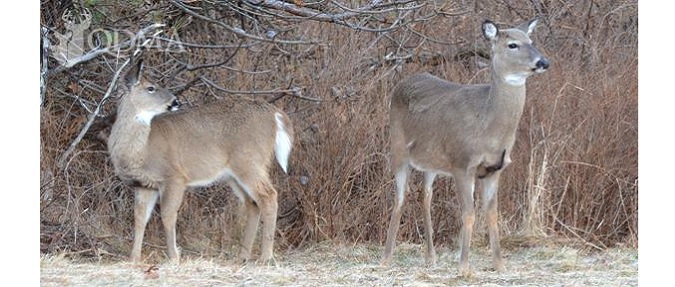
The QDMA promotes harvesting an adequate number of does to keep deer populations in balance with available resources like forage and cover. This leads to a discussion of how many does to shoot, since “adequate” could mean a lot, a few, or no does at all, depending on the situation. Once an appropriate doe-harvest goal is established for a location, the next most common question is “Which does are best to take?” Here’s our guidance.
If deer density far exceeds balance with available nutrition, we generally recommend choosing an adult doe from a group. Your doe-harvest goal is probably a large number, and in this case, any doe that presents you with an ethical shot opportunity should be fair game. However, adult does age 2½ or older are the most reproductive segment of a deer population. On average, they produce more fawns that survive, so their removal helps balance a herd with its habitat in the shortest time frame. When you have a choice in this situation, select an adult doe.
On the other hand, if you have set a more modest doe-harvest goal to help you maintain or perhaps grow the deer population where you hunt, choose does under 2½ years of age. Again, these younger, less experienced does tend to produce fewer fawns that survive. Adding them to your freezer has a smaller impact on population growth than taking an adult.
Separating Adults From Younger Does

How can you separate 6-month-old and 1½-year-old does from the adults in the group? The largest-bodied does in the group are generally the adults. These adults also tend to be more alert and cautious than the younger does, which can also help you separate them. Just be careful when trying to choose a smaller, younger doe for harvest, because it is easier to kill a button buck by mistake given the similar body size.
QDMA produced an educational poster you can display at deer camp or around the skinning pole that will help you identify these and other characteristics that separate button bucks from does, as well as older from younger does.
Of course, the largest-bodied does aren’t necessarily the oldest adults. Like humans, does come in many shapes and sizes. I have seen 3½-year-old does win “heaviest doe” contests where entrants ranged to 6½ years and possibly older. These deer were harvested on properties in close proximity to each other with comparable habitats, so the weight differences weren’t a function of nutritional differences. So, when you select for the “largest” doe in a group, you’re automatically selecting across a range of adult ages. Harvesting deer from all age classes is good for the deer herd, and it provides important data to use for establishing future doe-harvest goals.

